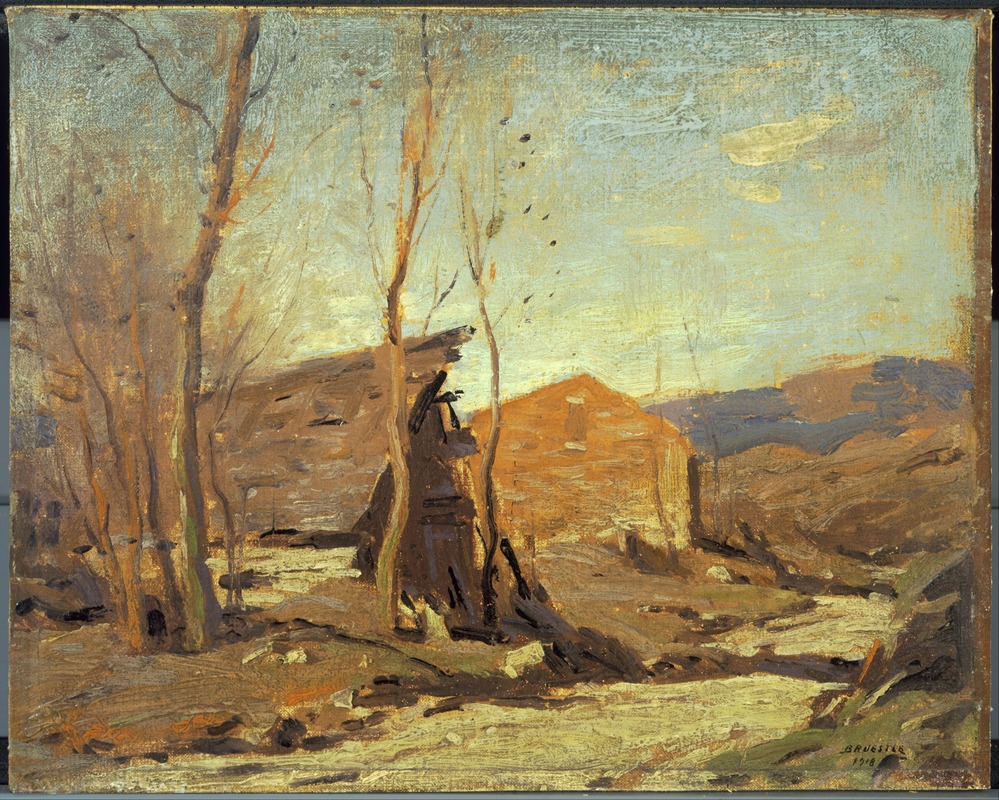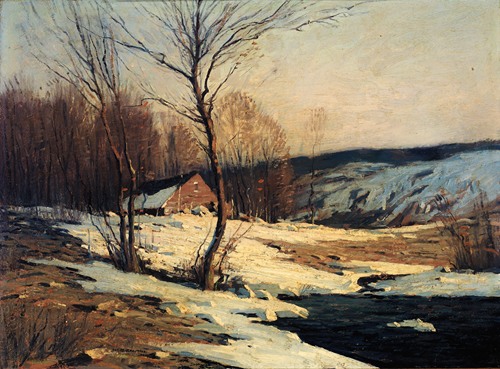

Born to German immigrants in New York City in 1871, Bruestle studied art first in New York and then in Paris. His initial sojourn to Connecticut brought him to Essex in 1886, and he was in Hadlyme by 1900, thus establishing him as an early member of the Old Lyme Art Colony. In 1905 he bought a summer home in the Hamburg section of Lyme. Although he continued to maintain a residence in Manhattan, and was an active member of numerous New York City art associations—the Society of American Artists, the National Arts Club, Allied Artists of America, the Salmagundi Club, and the Lotos Club—his signature work was inspired by the rural topography of the Connecticut River.
Bruestle exhibited at the Art Institute of Chicago, Carnegie Institute, Pittsburgh, Corcoran Gallery, Lyme Art Association, National Academy of Design, Paris Salon of 1895, and the Pennsylvania Academy of Fine Arts. His works are represented in the permanent collections of the Smithsonian Museum of American Art, the Butler Institute of American Art, the Florence Griswold Museum, and the San Diego Museum of Art. He died in 1939 in New Haven, Connecticut.

